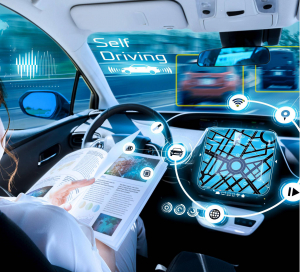FUTURE THEMES PORTFOLIO FUTURE MOBILITY & ENERGY
Revolution of the mobility, evolution of the energy concepts
CARS 2.0
Electric cars differ from conventional combustion engines in many aspects. They are far less technically complex, are more durable and require significantly less maintenance and care. Most crucially, however, the reduced complexity is leading to a loss of importance of the hardware and depriving the car companies of what has been their most important selling point to date. And these are only the changes at the hardware level.
The biggest changer, however, is taking place in the software sector. This is an area that has gradually gained in importance over the last three decades, but is still treated step motherly in the traditional automotive industry. The long-established groups have not even developed their own operating system. And this is despite the fact that software will determine which car the customer buys in the future.
Automotive companies are springing up all over the world and ushering on a new era. The aim is to develop the most innovative and attractive automobile. The winner will be the one who offers the customer the highest value in terms of comfort, performance, price and prestige.
The new mobility will only work in harmony with new energy concepts.
China and Germany are leading the way in the implementation of future mobility solutions and the implementation of energy sources that are available in the long term, have an economically reasonable price and whose environmental impact is as low as possible.
ENERGY 2.0
Besides wind and sun is hydrogen one of the hopefuls of the future. The omnipotently available energy carrier is easy to transport, has high mobility, is ideal for storing energy and is considered a potential buffer for renewable energies.
The global demand for new energy sources is enormous. According to the WHO, less than 8% of the Asian population breathes fresh air. What we are used to in Western Europe is an exception for most Asians. Despite all efforts, China is still the world’s largest emitter of greenhouse gases. India joins it as the third largest emitter.
The exciting question is, which companies are going to profit more from the global realignment of energy production.
The race is on and the claims are far from all staked out.


